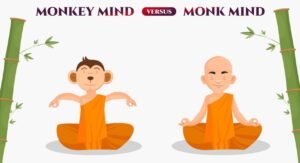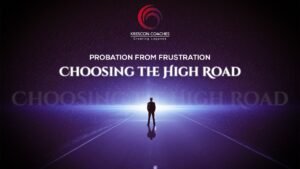“Are you a God?” -“No.”
“Are you an Angel?” -“No.”
“Are you a Saint?” -“No.”
“Then what are you?” -“I am the awakened one. I am Buddha!”
After the Buddha was enlightened, he walked about in India. Along the way, he was come across by several people who recognized him to be an extraordinary being. His appearance was not that of regular men but somewhat of a divine essence. When asked about his identity, he denied being a God, angel, or saint but proclaimed to be awake.
Siddhartha had become the Gautama Buddha and was known as the Awakened one. For 29 years, Siddhartha Gautama lived as a prince in his father’s kingdom, which is presently located in Nepal.
In order to shield Siddhartha from any encounters that might lead him toward a spiritual journey, his father ensured that he only experienced a life of luxury during his upbringing. However, in due course, the prince took the bold step of venturing beyond the palace walls. He realized that material wealth did not constitute the ultimate purpose of life. In his life beyond the confines of his palace, he witnessed and encountered sufferings and struggles, what later came to be known as the four signs. These profound experiences irreversibly altered his path.
Gautama began intense ascetic training but couldn’t find freedom from suffering. He pushed his austerities further, even starving himself, but eventually questioned his path. Upon arriving in Gaya, located in present-day Bihar, he settled beneath a Bodhi tree and engaged in meditation.
At last, in a profound moment of realization, he comprehended that suffering stemmed from humanity’s insistence on permanence in an ever-changing world.
The cause of suffering lay in ignorance of life’s transience, and liberation from suffering could be attained by recognizing the fallacy of believing in lasting states and attachments. This insight broke the cycle of desire, striving, rebirth, and death.
With his enlightenment fully realized, Siddhartha Gautama became the Buddha, the enlightened one.
“To the mind that is still, the whole universe surrenders.”
~Lao Tzu
Many people are asked Who They Are or What they do. It’s an easy question that leads mostly to an easier answer. I am an individual, I work at a so-and-so place, I like dogs, and I love food. My hobbies are reading, strumming the guitar, collecting ancient coins, etc. But these are all objects that we are connected to, including our attachment to our earthly identity, our emotions, our thoughts, and so on.
Therefore, what does it mean to experience awakening:
· In realizing what one is; ask yourself – what you are.
· It is to attain mastery over the mind and anchor it in the present reality.
· To enable one in merging the mind, body, and the actual world.
Finally, to awaken is to infuse vitality into the present moment, fostering mindfulness and conscious awareness, enabling the genuine embodiment of the present moment.
So, when you ask yourself or a person, “What are you?” Naturally, the answer seldom finds its way to their mind or mouth. After all, this is not an easy question because many people have not contemplated or worked on figuring out their real selves.
“The person you are trying to be is objective, while your inner being already exists. Knowing what you are will help you… find you.”
Let’s say, you ask yourself this question. When asking “What am I?” one contemplates whether they are the body, emotions, thoughts, and other transient aspects of their experience, or if they are the underlying awareness that perceives and witnesses these phenomena. This introspective exploration recognizes that the body, emotions, and thoughts are subject to change and impermanence, while the observing consciousness remains constant.
Identifying yourself with the changing aspects of experience, also known as attachment, can lead to a sense of incompleteness or dissatisfaction. This is because these objects are inherently transient and subject to fluctuations. However, recognizing oneself as an unchanging awareness can bring a sense of wholeness, as it is a stable and eternal aspect of one’s being.
Gautama Buddha had experienced an awakening in knowing what he was rather than who he was. Who he was, was already apparent but what he was, was enlightenment.
Therefore, by disentangling from excessive attachment to ever-changing objects and recognizing the unchanging awareness by constantly asking yourself the question ‘What am I?’, you can cultivate a deeper sense of fulfillment and inner peace – the key attributes for any Leader on the way to transform himself into a Legend. In understanding our true purpose and realizing what am I, one transforms oneself into a legend and leaves a meaningful legacy behind.
Ultimately, the exploration of “What am I?” can be a deeply personal and transformative journey, leading to a more profound understanding of oneself and one’s place in the world. Can there be anything more urgent or important for us than such a realization?
Therefore, taking an extract out of the poem of Ella Wheeler Wilcox, we understand:
I AM
I know not whence I came,
I know not whither I go
But the fact stands clear that I am here
In this world of pleasure and woe.
And out of the mist and murk,
Another truth shines plain.
It is in my power each day and hour
To add to its joy or its pain…


